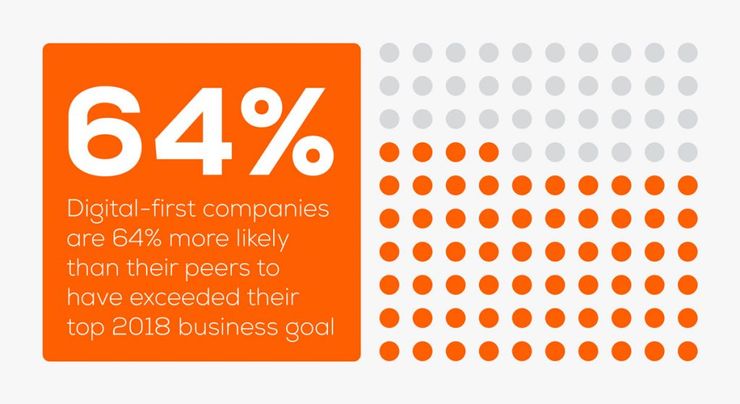
Customer Experience (CX): the race to the ‘buy button’
In the business to business (B2B) customer journey, there is rarely a ‘buy button’ at the end of that journey, but the similarities with the consumer customer journey processes are marked, and in many cases, as flawed.
Because when we think of CX – customer experience – many marketers often confuse this with the customer journey and even then, see it all as just a race to conversion, or purchase.
Building opportunities
To think in this way means you misunderstand customer experience, and the many business opportunities made possible through best practice CX. It probably also means you don’t understand human beings much, either.
We’ll talk about the customer journey in a later blog, but for now I want us to focus on CX.
What is CX, and how does it relate to the customer journey?
Customer experience can be defined as the characterisation and summarisation of the complete interaction a prospect or customer has with your organisation during the buyer journey.
And this is where the confusion comes in, because while the phrase ‘buyer journey’ eludes to structured delectation, it can also mean chaotic, frustrating and terrible. CX relates to the quality of that buyer journey, rather than the structure of the journey itself but they are similar:
- Consideration
- Evaluation
- Purchase point
- Advocation and retention
Given that the buyer journey is structured into these four phases, we need to focus on each phase with the objective of figuring out how we can improve not only each individual phase experience, but its synergistic relationship with the other phases in the buyer journey, and beyond.
Do your customers actually know what a buyer journey is?
This question means marketers must consider one fundamental point on customer perceptions: namely, you are treading a pathway you are completely familiar with, and fully understand – but do your customers understand it?
The answer is very probably no, so the only way you can build fluidity and value into the customer experience is to take the buyer journey yourself, looking at it from the customer’s standpoint.

The customer lens
This is a tough assignment, but one that pays massive dividends because you will rapidly learn where the gaps are and how the filling of those gaps can build greater opportunities for relationship building from the consideration phase to purchase – and of equal importance, beyond.
Consideration
In the B2B space the consideration phase may be triggered by a range of emerging situations within the prospect or existing customer’s business landscape.
These can include everything from vendor product or service price increases, vendor supply chain alterations, vendor specification changes, through to customer technical evolutions or new product developments.
Whatever triggered this consideration, the search that it initiates will seek to define and categorise the required replacement product or service by its level of perceived value. This means your brand needs to be recognisable, distinctive and stand out in its ability to tell stories.
To do this, your brand also needs to be very consistent in its storytelling to ensure that when B2B purchasers in the consideration phase see your brand they see beyond the logo alone, to a nomenclature that clearly and consistently communicates very strong core values.
If these core brand values are clearly and consistently communicated, they power CX through instant brand recognition, surety and certainty. In other words, the brand is recognisable, and resonates with the customer.

Evaluation
This strong, consistent overarching brand nomenclature will help make the transition from the consideration phase to evaluation a smoother journey because the brand value is understood through clarity and consistency in storytelling.
At this stage in the buyer journey, storytelling is an ever-more critical part of CX, because the evaluation phase is simply about objective comparison, meaning that while your product or service has survived the consideration phase, it now faces more and newer competition.
Lowering competitive risk
In order to lower competitive risk, build visibility, and maintain a strong position in the evaluation phase, further optimising CX through the introduction of your own, transparent comparative information, designed to guide rather than persuade will drive customer engagement.
And this brings us back to the original question – do your customers understand the buyer journey and its relevance to CX? Again, the answer is still no, but what they will now understand is that your highly visible brand offers surety and certainty.
That is CX working as it should.
Purchase point
The purchase point is the phase best understood by marketers, because it is the area by which we most often measure our success. It’s where the mythical ‘buy button’ lives, and because of that high visibility, it’s where the greatest performance related resources are deployed.
But what does that mean when viewed through the customer lens?
For marketers, this all-consuming, one dimensional race to the buy button will distract from other fundamentals, like the synergistic relationship with the other phases in the buyer journey, and in this case we’re looking at critical areas such as customer retention.
But the sale was the end, right?

Advocation and retention
To see it that way is pretty one-dimensional and binary, because while a sale may have taken place, very many buyers – up to 600% of these new customers may still be engaged with the consideration or evaluation phases of the buyer journey – with your competitors.
So the purchase point is really the beginning of another chapter for CX, because customer consolidation and retention is critical to business growth and therefore the development of loyalty and advocacy is not only important in the purchase phase but critical in next-phase objectives.
That is because there is research to prove that well managed post-sale advocation and retention programmes can generate as much, if not more, sales volume from post-purchase service as from all funnel marketing.
Building on value
So, CX is a critical element in the buyer journey. It is not a nice to have, but a vital element in winning customers and of greater importance, keeping those newly-acquired customers engaged in a high-value, long-term business relationship.
Novacom is an award winning B2B digital marketing and customer experience agency focusing on delivering transformation initiatives that deliver real value for our global clients.
© 2024 Novacom Group Limited. All rights reserved. Legal and Privacy



